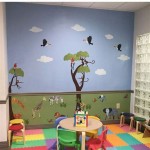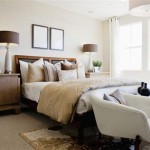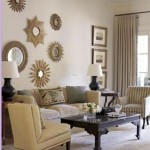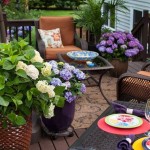Arabian Style Room Decor: Creating an Oasis of Elegance and Warmth
Arabian style room decor, often referred to as Middle Eastern or Moroccan design, offers a rich tapestry of textures, colors, and cultural influences. It evokes a sense of exotic luxury, warmth, and tranquility. A successful implementation of this style transforms a space into a haven, echoing the grand interiors of Arabian palaces and traditional homes. The key to achieving this aesthetic lies in understanding its core elements and applying them thoughtfully. This article will explore the essential aspects required to create a truly captivating Arabian-inspired room.
Key Elements of Arabian Style Decor
Several elements are crucial in creating a space that reflects the Arabian aesthetic. These elements work together to create a harmonious and visually compelling environment. Understanding and incorporating these will ensure authenticity and desired ambiance. Ignoring these elements will lead to an incomplete and unconvincing imitation.
1. Color Palette: The color palette is a foundational element. Authentic Arabian decor embraces a range of warm, inviting hues. These often include rich reds, such as crimson and ruby, alongside deep oranges, terracotta, and ochre. These earthy tones are often balanced with cooler accents of azure, turquoise, and deep blues, reminiscent of the Mediterranean and desert skies. Gold and bronze metallic accents are frequently incorporated to add a touch of opulence and reflect the region's historical wealth and artistry. These palettes are intended to create a feeling of both warmth and spaciousness.
2. Textiles and Fabrics: Textiles are paramount in Arabian style. Luxurious fabrics are used liberally throughout the space. Silk, velvet, and brocade are prized choices, often featuring intricate patterns and embroidery. These fabrics can be found in curtains, cushions, throws, and upholstered furniture. Layering is key. Consider incorporating multiple layers of textiles with different textures and patterns to add visual interest and depth. Intricate geometric and floral motifs, characteristic of Arabian art, are commonly found on these fabrics.
3. Furniture Selection: Furniture in the Arabian style often features ornate details and low profiles, encouraging relaxation and intimate gatherings. Daybeds, ottomans, and low tables are commonplace. Carved wood furniture, inlaid with mother-of-pearl or intricate metalwork, adds a touch of classic elegance. Furniture is often adorned with cushions and pillows, inviting occupants to lounge comfortably. Pieces should be proportionally placed, enhancing the open floor space and the feel of spaciousness.
4. Lighting and Illumination: Lighting is instrumental in creating the desired atmosphere. Dim, ambient lighting is preferable to bright, harsh illumination. Intricate lanterns, both hanging and standing, cast beautiful patterns on walls and ceilings. These lanterns can be made of metal or glass, often with perforated designs that allow light to filter through artistically. Candles are also a key component, contributing to the warm and inviting ambiance. Consider the strategic placement of lamps and sconces to create shadow and depth.
5. Architectural Features and Accents: Architectural features are heavily influenced by design and culture. Arches are a defining characteristic. Consider incorporating arched doorways, windows, or even decorative arches as focal points. Decorative screens, known as "mashrabiya," can be used to add privacy while still allowing for air circulation. These screens often feature intricate geometric patterns. Furthermore, incorporate traditional patterns in wall decorations, such as tile mosaics, arabesques, and geometric motifs, which add depth and visual interest.
6. Decorative Objects and Accessories: Carefully chosen accessories enhance the overall aesthetic. These include items such as ornate mirrors, brass trays, and intricately carved wooden boxes. Ceramic pottery, often hand-painted with vibrant colors and patterns, can be placed on tables or shelves. Metalwork, including lamps, candlesticks, and decorative bowls, adds a touch of opulence. The selection of these accessories should be based on the overall design and color scheme to ensure coherence with the rest of the room. Consider the materials, such as wood carvings, metal repousse, and intricate inlaid work.
7. Rugs and Carpets: Rugs and carpets are indispensable. They ground the space and add warmth and texture. The selection of rugs should be based on the color palette and the patterns already in place, and should complement the room's furniture selection and color scheme. Traditional Persian or Oriental rugs, known for their intricate designs and rich colors, are often employed. The size of the rug is important, as it should appropriately fit the space and provide adequate coverage for the main seating area. A large, central rug can tie the room together, while smaller accent rugs can be strategically placed to define areas and add visual interest.
In conclusion, Arabian style room decor offers a unique and visually stunning aesthetic that has captivated global audiences. By paying close attention to the color palette, textiles, furniture, lighting, architectural details, and accessories, it is possible to create a space that reflects the beauty, warmth, and luxury of Arabian design. Through careful planning and attention to these key elements, one can create a personal oasis that reflects the rich cultural history and artistic heritage of the Middle East.

31 Elegant And Luxury Arabian Bedroom Ideas Beauty Bedrooms

1001 Arabian Nights In Your Bedroom Moroccan Décor Ideas

5 Luxury Arabian Style Home Decor Ideas

Arabic Style Interiors L Esseiale Moroccan Living Room Decor

Arabic Style Furniture Living Room Arabian Decor

Arabic Style Discover The Secrets Of Magic Décor From Orient

Bedroom Interior Design In Arabian Style Interiorholic Com

Top 5 Arabic Living Room Inspirations For Your Home Love Happens Mag

Top 10 Arabian Decor Ideas

Know 8 Arabian Interior Style Ideas For Your Home
Related Posts







